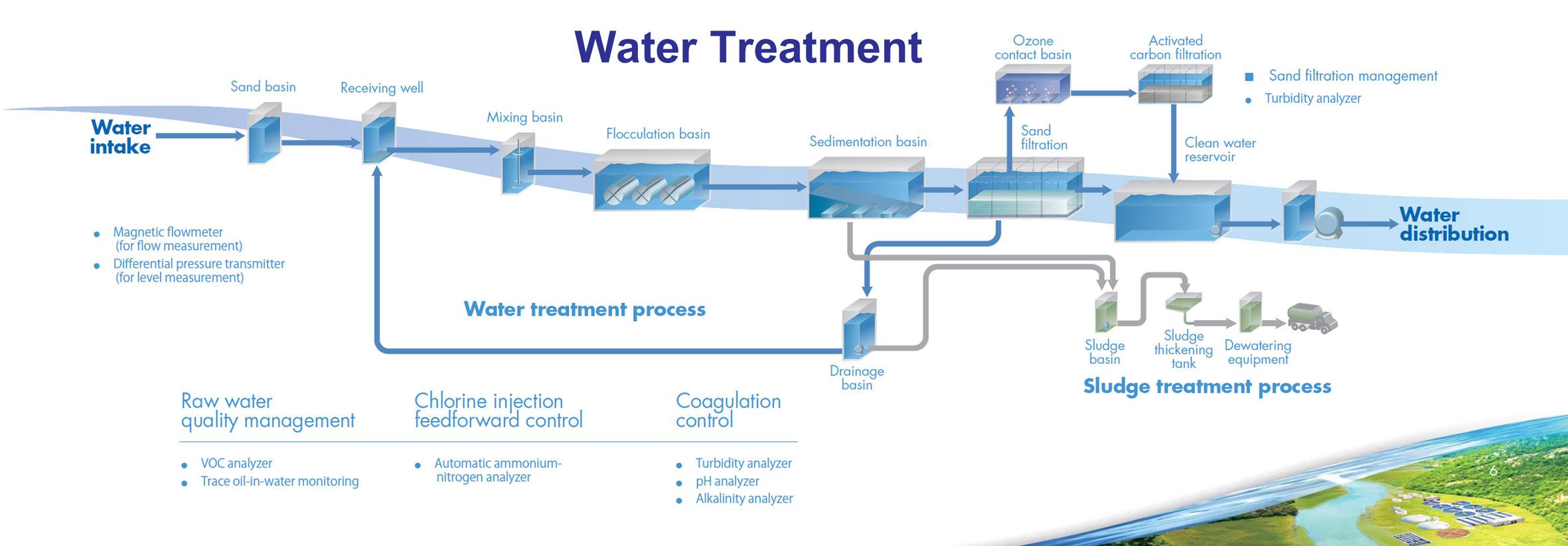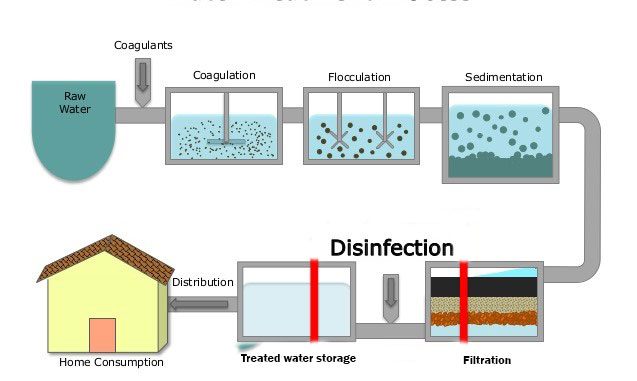Residential Water Purification Systems for Dummies
Table of ContentsAll about Residential Water Purification SystemsResidential Water Purification Systems - TruthsResidential Water Purification Systems for BeginnersNot known Facts About Residential Water Purification SystemsIndicators on Residential Water Purification Systems You Should KnowAn Unbiased View of Residential Water Purification Systems
A phosphorous substance is included in aid regulate rust of pipes. This helps prevent lead and copper that may be existing in pipelines from leaching into the water. As the water leaves the plant, ammonia is added to transform the chlorine to chloramine, a disinfectant that preserves a recurring in the distribution system against microbial contamination.All chemicals that are added are licensed food grade, risk-free for usage in foods. Treated water is saved in deep underground tanks as well as likewise flows by gravity to pumping stations and also right into the distribution system. The circulation system consists of 1,960 miles of water keys ranging in diameter from 4" to 60".
Removal of preference and also smell compounds from the water.: Softens the water.: Purification to eliminate small fragments as well as disinfection to kill viruses and germs, as well as make certain an unsuitable environment for virus as well as germs development throughout the circulation system (residential water purification systems).
How Residential Water Purification Systems can Save You Time, Stress, and Money.
Eight Phases of the Wastewater Refine Phase One Bar Screening Removal of huge products from the influent to stop damage to the center's pumps, valves and various other equipment. The procedure of treating and also redeeming water from wastewater (any kind of water that has been used in homes, such as flushing commodes, washing meals, or bathing, and also some water from commercial usage as well as tornado drains) begins with the assumption that after it is treated it will certainly be tidy adequate to reenter the environment.
According to the EPA, The Clean Water Act (CWA) develops the standard framework for controling discharges of toxins right into the waters of the United States and managing quality criteria for surface waters. Under the CWA, EPA establishes wastewater standards for sector. The EPA has also developed national water quality standards suggestions for contaminants in surface area waters.
Related White Documents Select Products Stage Two Testing Removal of grit by streaming the influent over/through a grit chamber. Great grit that discovers its means into the influent demands to be eliminated to avoid the damages of pumps as well as equipment downstream (or impact water flow). Too tiny to be screened out, this grit needs to be removed from the grit chamber.
Fascination About Residential Water Purification Systems
Stage Four Aeration Air is pumped right into the oygenation tank/basin to urge conversion of NH3 to NO3 as well as give oxygen for microorganisms to remain to proliferate as well as expand. Once converted to NO3, the bacteria remove/strip oxygen molecules from the nitrate molecules and the nitrogen (N) is produced as N2 (nitrogen gas).
This starts in the oygenation container. The key function of the aeration tank is to pump oxygen into the storage tank to urge the failure of any natural product (and the growth of the bacteria), in addition to make sure there is adequate time for the organic material to be broken down.
This procedure is managed to supply the ideal problems for bacterial growth. Oxygen gas [O2] levels below 2 ppm will exterminate the microorganisms, lowering effectiveness of the plant. Liquified oxygen tracking at this stage of the plant is crucial. Ammonia as well as nitrate measurements prevail to measure just how efficient sites the microorganisms are in transforming NH3 to N2.
The Buzz on Residential Water Purification Systems
Phase Five Additional Clarifier Dealt with wastewater is pumped into an additional clarifier to permit any type of remaining organic debris to settle out of cured water circulation. As the influent exits the aeration procedure, it flows into a second clarifier where, like the primary clarifier, any type of really small solids (or fines) sink to the bottom of the tank.
Part of this triggered sludge is gone back to the aeration tank to boost the bacterial focus, assistance in breeding, as well as increase the break down of organic product. The extra is thrown out (residential water purification systems). The water that flows from the additional clarifier has considerably minimized natural product as well as needs to be coming close to anticipated effluent specifications.
With the enhanced focus of microorganisms as part of the oygenation stage, there is a demand to evaluate the outgoing effluent for bacteria existence or absence and also to disinfect the water. This makes sure that greater than specified concentrations of germs are not launched right into the atmosphere. Chlorination is one of the most typical and affordable type of sanitation but ozone as well as UV sanitation are also raising in appeal.
All About Residential Water Purification Systems
Water is directed from the Head Container to the Claricone clarifier. Water goes into the clarifier at the blending zone situated in all-time low of the Claricone. Lime is added to the water in this area where it her latest blog reacts with the calcium as well as the magnesium in the water to form precipitates.



After enough time, fragments follow each various other as well as become larger bits, or, floc, which is prone to settle in water. This procedure of floc development is called flocculation. To help in the flocculation of bits, an anionic polymer is included in the mixing area of the cone. Clarification of water is accomplished by the seperation of put on hold solids from water by gravity.
The clarified water relocations upwards slowly, eventually passing over the effluent click this link dam to the cone outlet and on the to filters for additional therapy. The water plant integrates a single stage lime softening operation to eliminate solidity. Solidity is brought on by the visibility of liquified bivalent and polyvalent steel ions, predominantly calcium as well as magnesium.
4 Easy Facts About Residential Water Purification Systems Shown
This is added both in the clearwell as well as the high solution discharge as water enters the distribution system. 2 mg/l is usually preferable in the plant tap.